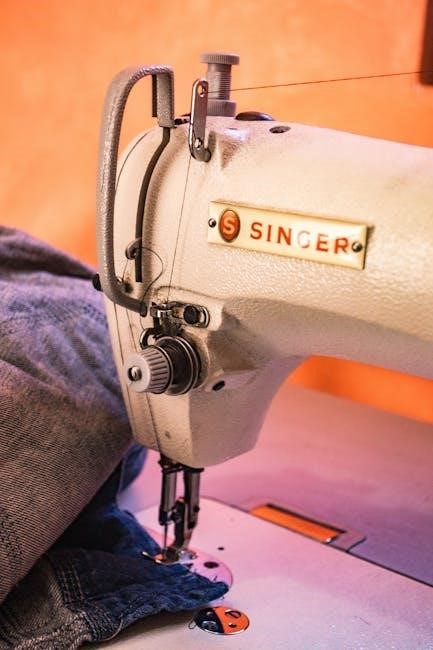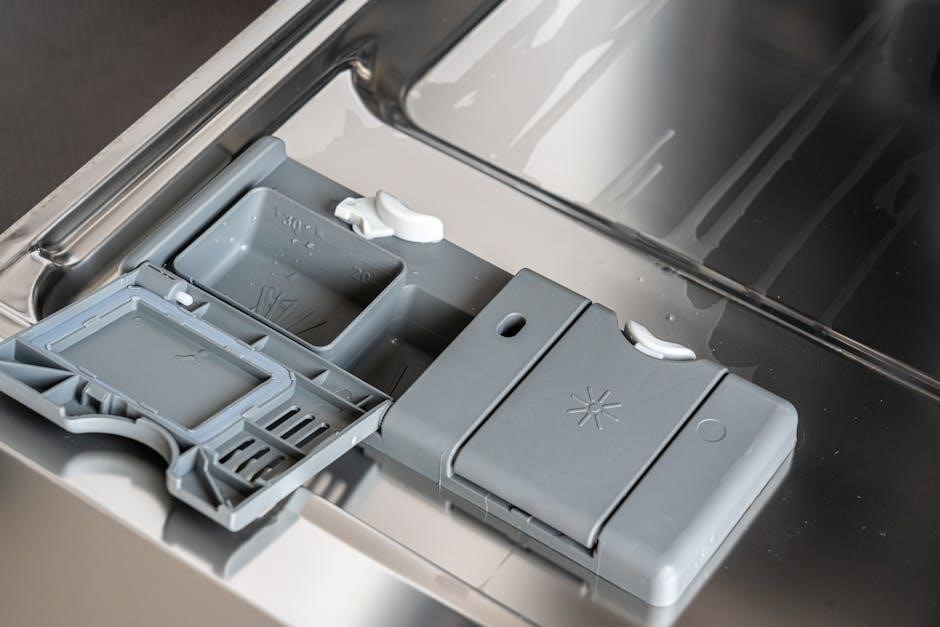bush washing machine user manual
- by stephany

Bush Washing Machine User Manual: A Comprehensive Guide
Welcome to the comprehensive guide for your Bush washing machine! This manual provides essential information for operating and maintaining your appliance. Learn about safety, cycle selection, maintenance, and troubleshooting. Ensure optimal performance and longevity with these instructions.
Understanding Your Bush Washing Machine Model
Before you begin using your Bush washing machine, it’s crucial to understand the specific model you own. Each model boasts unique features, capabilities, and operational nuances. Identifying your model is the first step towards maximizing its efficiency and lifespan. Start by locating the model number, typically found on a sticker at the back of the machine, inside the door, or within the user manual provided upon purchase.
Once you have the model number, consult the corresponding user manual, either the physical copy or the digital version available on the Bush support website. The manual contains detailed specifications regarding wash cycles, load capacity, energy consumption, and available settings. Familiarize yourself with these specifics to tailor your laundry routines effectively.
Understanding the technological aspects, such as spin speed capabilities and water temperature controls, is also paramount. Different models have varying spin speeds, and the ability to control the water temperature allows you to preserve the quality of your garments. Use the manual to understand specific symbols and indicators. This knowledge empowers you to make informed decisions, optimize each wash cycle, and maintain your machine’s optimal condition.
Initial Setup and Installation

Proper initial setup and installation are vital for the safe and efficient operation of your new Bush washing machine. Begin by carefully unpacking the appliance and inspecting it for any visible damage incurred during shipping. Ensure all components listed in the user manual are present, including inlet hoses, drain hose, and any necessary installation tools.
Next, choose a suitable location for the washing machine. The surface should be level and stable to prevent excessive vibration during operation. Ensure the machine is within close proximity to a water supply and a drain outlet. Connect the inlet hoses to both the washing machine and the water supply, ensuring a secure and watertight seal. The drain hose should be properly connected to the drain outlet, avoiding any kinks or obstructions that could impede water flow.
Before the first use, it is crucial to remove any transit bolts or packaging materials used to secure the drum during transportation. These bolts are typically located at the back of the machine and must be removed using the appropriate tools. Failure to remove these bolts can cause severe damage to the washing machine during operation. Finally, perform a test run of the machine, following the instructions in the user manual, to ensure all connections are secure and the machine is functioning correctly.
Safety Precautions and Guidelines
Prioritize safety when operating your Bush washing machine by adhering to these precautions and guidelines. Always disconnect the appliance from the power supply before performing any maintenance or cleaning tasks. Avoid using flammable or explosive substances near the washing machine, as this could pose a serious fire hazard; Ensure that children and pets are kept away from the appliance during operation to prevent accidents or injuries.
Never attempt to repair or modify the washing machine yourself; instead, seek assistance from a qualified technician. Do not overload the washing machine beyond its specified capacity, as this can strain the motor and cause damage. Regularly inspect the power cord and plug for any signs of wear or damage, and replace them if necessary. Avoid placing heavy objects on top of the washing machine, as this could affect its stability and performance.

When using detergents and additives, follow the manufacturer’s instructions carefully and avoid using excessive amounts. In the event of a malfunction or emergency, immediately disconnect the washing machine from the power supply and contact customer support. By following these safety precautions, you can ensure the safe and reliable operation of your Bush washing machine for years to come. Remember to keep the area around the machine clean and dry to prevent slips and falls.
Control Panel Overview and Functions
Familiarize yourself with the control panel of your Bush washing machine to efficiently manage your laundry tasks. The control panel typically features a variety of buttons, dials, and displays that allow you to select wash cycles, adjust settings, and monitor the machine’s progress. The power button initiates the washing machine, while the start/pause button allows you to begin or interrupt a cycle.
The cycle selection dial enables you to choose the appropriate wash cycle for your laundry load, such as cotton, delicates, or synthetics. Temperature settings allow you to adjust the water temperature to suit the fabric type and soil level. Spin speed options enable you to control the final moisture content of your clothes.
Additional functions may include a delay start option, which allows you to schedule a wash cycle to begin at a later time, and a child lock feature, which prevents unintended changes to the settings. The display screen provides information on the current cycle status, remaining time, and any error messages. Understanding these functions ensures you can effectively customize each wash for optimal cleaning and garment care. Ensure the display is clear and responsive for easy navigation.
Wash Cycle Selection and Customization
Selecting the correct wash cycle is crucial for optimal cleaning and fabric care. Your Bush washing machine offers a variety of cycles designed for different types of fabrics and soil levels. The cotton cycle is ideal for everyday items like shirts and pants, while the delicates cycle provides gentle cleaning for lingerie and fine fabrics. For synthetic materials such as polyester and nylon, use the synthetics cycle.
Customization options allow you to fine-tune each wash cycle to meet your specific needs. Adjust the water temperature to hot for heavily soiled items, warm for general use, or cold for delicate fabrics to prevent shrinking or fading. Select the appropriate spin speed to balance effective water extraction with fabric protection. Higher spin speeds are suitable for durable fabrics, while lower speeds are gentler on delicate items.
Consider using pre-wash settings for heavily soiled clothes. Some models also offer features like economy modes for energy conservation or quick wash cycles for lightly soiled items needing a rapid clean. Always refer to garment care labels for specific washing instructions and adjust the cycle settings accordingly. Proper selection and customization ensure your clothes are cleaned thoroughly while maintaining their quality and appearance.
Detergent and Additive Usage
Using the correct type and amount of detergent is essential for effective cleaning and to prevent damage to your Bush washing machine. Always use High Efficiency (HE) detergent, which produces fewer suds and is specifically designed for modern washing machines. Regular detergents can create excessive suds, leading to poor rinsing and potential machine malfunction.
The amount of detergent needed depends on the load size, soil level, and water hardness. Refer to the detergent packaging for recommended dosage guidelines, but generally, less is more. Overusing detergent can leave residue on your clothes and in the machine, causing odors and reducing cleaning performance. For lightly soiled loads or soft water, use a smaller amount of detergent.
Fabric softeners can be added to the designated dispenser to reduce static cling and make clothes feel softer. However, avoid using fabric softener with microfiber or athletic wear, as it can reduce their absorbency. Bleach can be used to whiten and disinfect clothes, but always dilute it properly and add it to the bleach dispenser to prevent direct contact with fabrics. Other additives like stain removers or enzyme boosters can be used according to their instructions for specific stain types. Always follow the manufacturer’s guidelines for all detergents and additives to ensure optimal results and prevent damage to your machine.
Loading and Unloading Laundry
Proper loading and unloading techniques are crucial for ensuring your Bush washing machine operates efficiently and your clothes are cleaned effectively. Before loading, always check pockets for loose items like coins, keys, or paper, which can damage the machine or your laundry. Separate clothes by color and fabric type to prevent color bleeding and damage to delicate items.

When loading, distribute clothes evenly around the drum to maintain balance. Overloading the machine can reduce cleaning performance and strain the motor, while underloading can waste water and energy. A good rule of thumb is to fill the drum loosely, leaving enough space for clothes to move freely. Avoid wrapping clothes tightly around the agitator (if your machine has one) or stuffing them into the drum.
Once the wash cycle is complete, promptly remove the laundry to prevent wrinkles and musty odors. Shake out each item to reduce wrinkles and tangling. Check for any remaining items in the drum before starting another load. Clean the door seal and drum periodically to remove any lint or residue buildup. Following these loading and unloading guidelines will help you achieve optimal cleaning results and prolong the life of your Bush washing machine.
Routine Maintenance and Cleaning
Regular maintenance and cleaning are essential for keeping your Bush washing machine in optimal condition and prolonging its lifespan. A clean washing machine not only performs better but also prevents the buildup of mold, mildew, and unpleasant odors. Make it a habit to wipe down the exterior of the machine with a damp cloth after each use to remove any spills or residue.
The detergent dispenser should be cleaned regularly to prevent clogs and ensure proper dispensing of detergent and additives. Remove the dispenser drawer and rinse it thoroughly with warm water, removing any buildup. The door seal is another area that requires attention, as it can trap moisture and debris, leading to mold growth. Wipe the seal with a damp cloth after each wash and leave the door slightly ajar to allow air circulation.
To clean the interior of the washing machine, run a hot water cycle with a cup of white vinegar or a washing machine cleaner. This will help remove mineral deposits and sanitize the drum. Clean the lint filter regularly to ensure proper drainage and prevent clogs. By following these routine maintenance and cleaning tips, you can keep your Bush washing machine running smoothly and efficiently for years to come.
Troubleshooting Common Issues
Even with proper care and maintenance, your Bush washing machine may occasionally encounter problems. Understanding common issues and their potential solutions can save you time and money on repairs. One frequent problem is the machine not draining properly. This could be due to a clogged drain hose or a malfunctioning pump. Check the drain hose for any kinks or blockages and clean the lint filter to ensure proper water flow.
If the washing machine is not spinning, it could be caused by an unbalanced load or a faulty lid switch. Redistribute the laundry evenly in the drum and make sure the lid is properly closed. Another common issue is the machine making excessive noise during operation. This could be due to loose items in the drum, worn-out bearings, or a problem with the motor.
If you encounter any error codes on the control panel, consult the user manual for specific troubleshooting steps. For more complex problems, such as electrical issues or motor malfunctions, it is recommended to seek assistance from a qualified appliance repair technician. By following these troubleshooting tips, you can resolve many common issues and keep your Bush washing machine running smoothly.

Accessing Support and Further Information
Should you require further assistance or information regarding your Bush washing machine, several resources are available to provide support. The first point of contact is the comprehensive user manual that accompanied your appliance. This manual contains detailed instructions, troubleshooting tips, and specifications specific to your model.
In addition to the user manual, the Bush support website offers a wealth of information, including FAQs, troubleshooting guides, and product specifications. You can also find helpful videos and articles that demonstrate various maintenance and repair procedures. If you are unable to find the information you need online, you can contact the Bush customer support team directly via phone or email.
The customer support team can provide assistance with a wide range of issues, including technical problems, warranty inquiries, and parts replacement. When contacting customer support, be sure to have your model number and serial number readily available. For more complex repairs, it may be necessary to contact an authorized service technician. You can find a list of authorized service technicians in your area on the Bush support website. By utilizing these resources, you can ensure that you receive the support and information you need to keep your Bush washing machine running smoothly.
Related posts:
Lost your Bush washing machine user manual? Don’t panic! Find it here and conquer laundry day. Quick downloads & easy guides!
Posted in United Kingdom